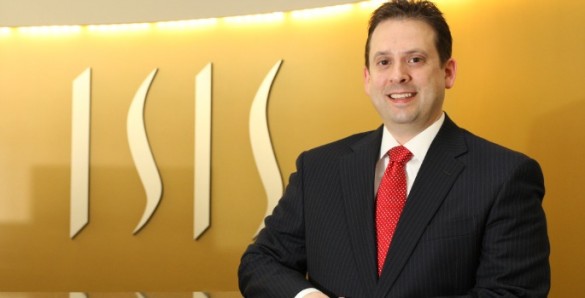
Vanderbilt’s Institute for Software Integrated Systems (ISIS) has built and will operate a Web-based collaboration platform for the new National Science Foundation-funded Cyber-Physical Systems Virtual Organization. The CPS-VO aims to bring together researchers, educators and students working in academics, industry and government agencies in a kind of virtual brain trust to foster progress, develop priorities and quickly distribute information in the rapidly emerging field of cyber-physical systems.
ISIS’s role in the project is funded through a five-year, $1 million NSF grant project, titled VOCYPHER or Virtual Organization for Cyber-Physical Research. The CPS-VO portal debuted this week at CPS Week in Chicago.
Cyber-physical systems, the next generation of engineered systems, are smart technologies that merge the physical world with computation and are generally software driven with multiple applications from aerospace to automobiles to civil engineering and medicine.
The basic idea behind the CPS-VO is to connect basic researchers with the potential to solve problems and those in the field in need of solutions, said VOCYPHER principal investigator Chris vanBuskirk.
Virtual organization part of rapidly developing field
In the virtual community, CPS researchers and stakeholders, such as government agencies and industry developers, could post problems and challenges, publish and share results, perform on-line experiments, provide educational materials and tools, and exchange ideas. While ISIS will build and maintain the site, individual users provide and drive the content.
CPS researchers are on the cusp of developments that are revolutionizing everyday life. For example, while today’s cars have computer chips that perform specific functions (e.g. anti-lock braking), tomorrow’s cars using CPS innovations could potentially interact with one another to improve traffic flow and prevent accidents, he said.
“What if cars could meet up with each other on the interstate and form communication networks, thus creating a kind of virtual train?” vanBuskirk asked. It’s the type of “grand question” that leads to future CPS innovation and one that VOCYPHER would hope to foster and encourage.
“There’s a huge social aspect to this,” he explained. “We have lots of little communities with their own expertise. But there’s not as much cross-interaction as there should be to solve big, complex problems.”
While industry drives the development of products, researchers are working on the basic platforms, innovations and understandings that could provide stepping-stones to all types of development. The idea is to find out “who’s out there working on techniques that can be applied to the really grand challenges of our age.”
“[rquote]We need more practicing engineers interacting with researchers and science policy decision makers to help guide research directions and priorities,” vanBuskirk said.[/rquote]
“You also need a theory of how to predict some of the unintended consequences arising in systems that have both ‘cyber’ and ‘physical’ aspects,” he added. For example, if a CPU, or the central processing unit that carries out the instructions of a computer program, generates heat, then it might impact surrounding systems if mounted physically near other, thermally sensitive equipment. In a car, that could lead to a breakdown.
ISIS researchers investigate CPS-related technologies
“What is needed is sound theory and novel engineering practices that directly support predicting more of those nasty types of interactions before spending millions on a prototype. You want to reliably sniff out these types of problems as early as possible in the design process, rather than discovering them through experimentation or trial and error,” vanBuskirk said.
ISIS researchers currently are investigating multiple CPS-related technologies. Among them are innovations that would help normalize the types of conveyance used in military vehicles, and provide security and networking innovations to allow multiple medical devices to interact in a hospital setting.
ISIS Director Janos Sztipanovits has been a driving force internationally in developing CPS technology. “We are inspired and extremely motivated by the responsibility the National Science Foundation gave us in accelerating the consolidation of the national research program in CPS. Our hope is that the CPS-VO Portal is becoming the international hub for CPS research.”